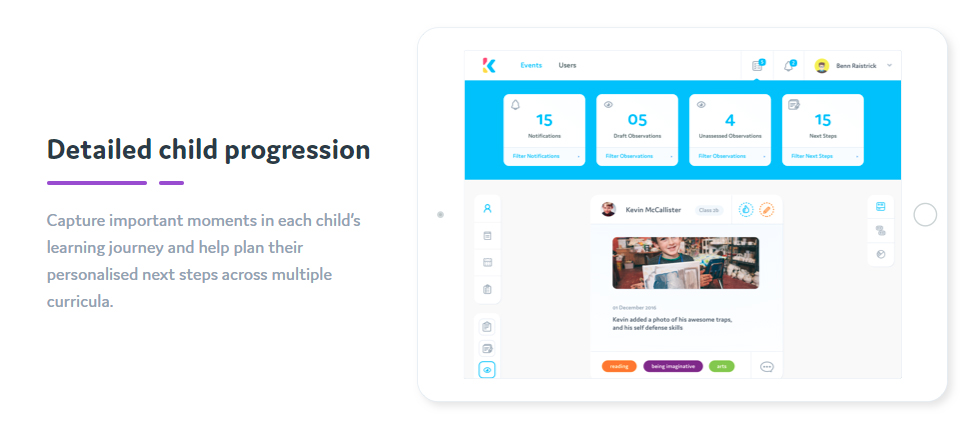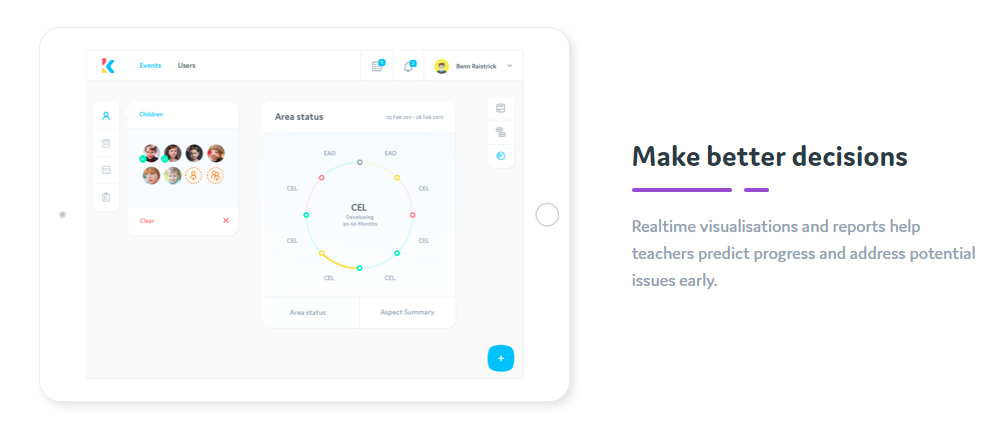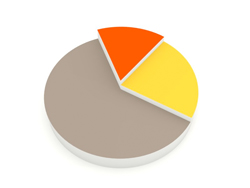From scores to written comments, verbal responses and summaries or the possibility of combing them all in order to generate a comprehensive narrative of a student’s progress - most teachers know what authentic assessment looks like. It is personalised, it is descriptive, and it is encouraging. Most of all, it should make a difference and give direction to the learner. Good teachers know what valuable feedback looks like and they also know that it must be delivered in a timely fashion and tailored in specific ways to make an impact.
The first component for any kind of genuine assessment and feedback is that of getting to know the students and their educational backgrounds, interests and academic goals. However, all of this comes at a cost and that is time. Teacher time is valuable and as we know, class sizes are not getting any smaller. From descriptive feedback, to assessments, to contributions and achievements, there lies the complexity of collation and organisation of all things said. How do you remember everything that you have said to a student, and have you remembered to jot it down to include in the final evaluation?
With AI growing in demand and offering a future of great promise, it comes as no surprise that there are now numerous technologies available in the marketplace to produce real-time, data-driven responses and personalised feedback and assessment for students. Artificial Intelligence platforms, such as Kinteract, provide for customised learning programmes, with the intention to improve and accelerate learning outcomes for students. This can start right from early years to university, creating a digital record for a lifetime of achievement and rewards.

Teachers using AI personalised learning tools, such as Kinteract, can make informed decisions based on their students’ outcomes and can steer the learning pathways for their learners so that they can accelerate at their own pace, some faster than others. As a result, students are offered interventions at just the right time with just the right amount of feedback to improve or accelerate learning. One size does not fit all, and this makes me wonder if we will see younger graduates in the years to come?
Assessment is truly authentic when students can take ownership, engage in and share their personal learning plans. Involving parents with very young children to support their development is a more powerful form of assessment than ever. By providing an immediate and personalised window to their child’s school day, carers can now be equipped with the knowledge they need to maximise on opportunities present and resolve any problems that may go unnoticed. We all know that children are unique and develop in various ways, and by utilising collaborative spaces, such as Kinteract, one can be reassured that no child is left behind.
With AI on the rise, there is no doubt that there is the potential to shape the next generation for more personalised learning and responsive teaching; helping teachers to more effectively meet the diverse needs of many of their students simultaneously. If we can think of authentic assessment more as a process of practice instead of an outcome, then innovative AI applications, like Kinteract, might be the best place to make a start.
Discover for yourself how Kinteract supports assessment best practices. Sign up for your free account today.

Want to receive cutting-edge insights from leading educators each week? Sign up to our Community Update and be part of the action!
Over 50% of Secondary schools across England and Wales are planning on using SISRA Analytics to support their analysis of KS4 and KS5 exam results data this year. The service has been developed to help ease workload giving staff time to put additional support in place when appropriate. SISRA Analytics provides staff, on results days and throughout the year, with a whole range of user friendly reports at the click of a button including headline figures, trend analysis as well as faculty and qualification-level analysis.
One SEN school in Manchester has streamlined its staff’s working days by moving all incident logging and reporting to an online system. Birches Specialist Support Primary School in Didsbury have teamed up with Adaptsoft, whose IRIS Adapt platform has allowed them to modernise beyond logging incidents in bound books, which had involved a great deal of writing up by one member of staff.
Video production company Mediamerge has released a new range of primary lessons filmed in three very different schools to add to an expanding collection of observation training videos. One of these schools, Irchester Community Primary in Northamptonshire, received recognition from Ofsted as an “example of good practice in science teaching”.
In case it’s slipped you by, Twitter is a social media service that allows messages of 140 characters or less to be sent out into the ‘Twittersphere’ for sharing. Like many social media you can follow people, organisations, brands, events on Twitter to see the tweets that they write and find out information and read content that they want to share. Personally, I use Twitter to interact with other educators and find it an invaluable PD tool. When I am using it as a tool for my department however I use it in a completely different way.

Mention the dreaded ‘D’ word in the staff room and many teachers will suddenly remember, ‘oh yes, there’s a pile of marking I must do… right now!’. It clears the room almost as quickly as the afternoon bell on the last day of summer term.
A slight exaggeration maybe, but data should be embraced as it can enhance the performance of both students and school in simple and positive ways – and there are many...
Attendance data is compulsory; it is collected and recorded twice a day, and for the majority of schools this is done electronically on their MIS. Using standard prepared reports from your MIS you can export attendance percentages which, with just a little help, can be transformed into clear, colourful, easily understood graphs. Generate a Year group, Tutor group or House group and so on.

A community-driven platform for showcasing the latest innovations and voices in schools
Pioneer House
North Road
Ellesmere Port
CH65 1AD
United Kingdom